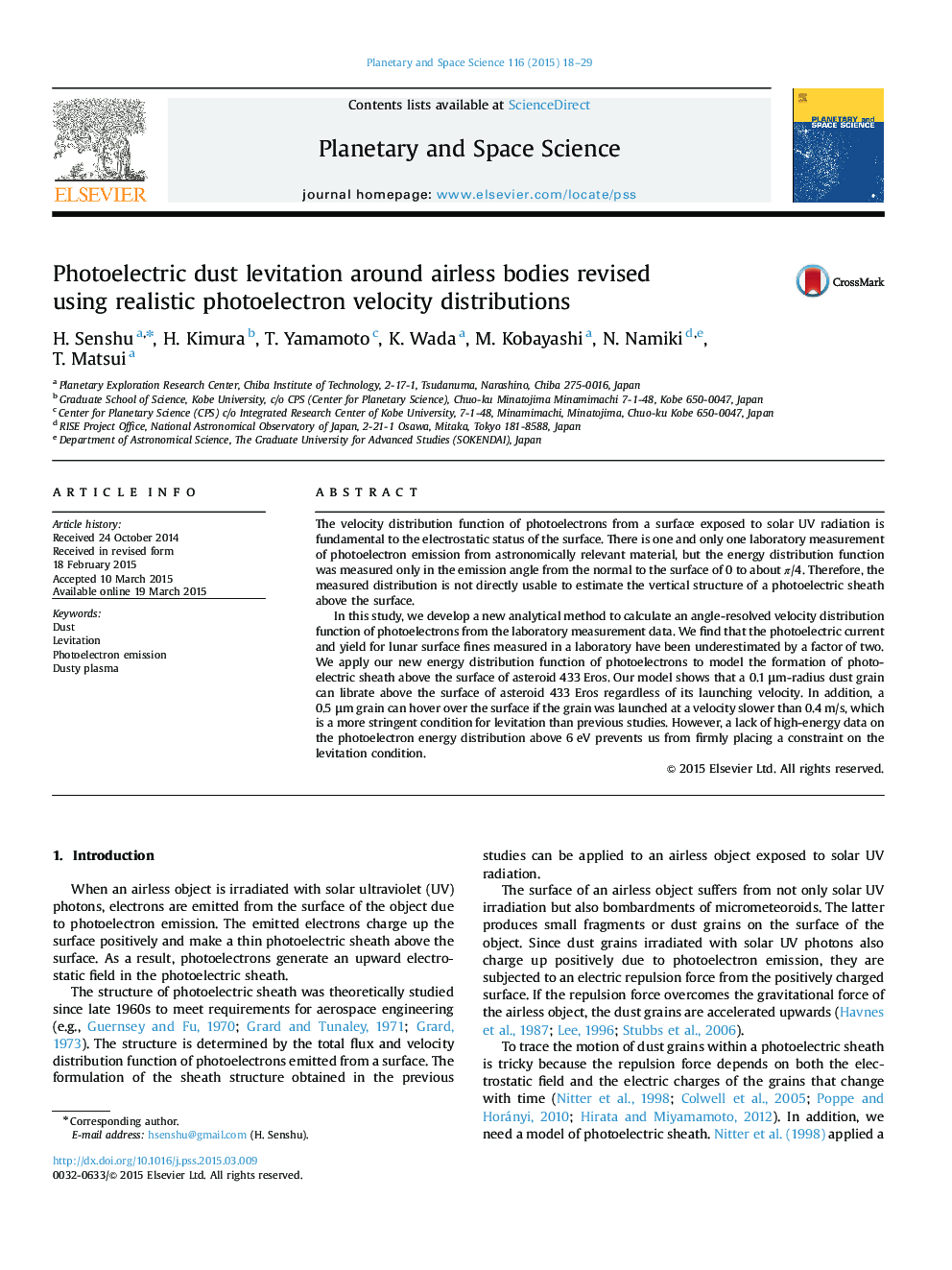| Article ID | Journal | Published Year | Pages | File Type |
|---|---|---|---|---|
| 1780951 | Planetary and Space Science | 2015 | 12 Pages |
Abstract
In this study, we develop a new analytical method to calculate an angle-resolved velocity distribution function of photoelectrons from the laboratory measurement data. We find that the photoelectric current and yield for lunar surface fines measured in a laboratory have been underestimated by a factor of two. We apply our new energy distribution function of photoelectrons to model the formation of photoelectric sheath above the surface of asteroid 433 Eros. Our model shows that a 0.1 μm-radius dust grain can librate above the surface of asteroid 433 Eros regardless of its launching velocity. In addition, a 0.5 μm grain can hover over the surface if the grain was launched at a velocity slower than 0.4 m/s, which is a more stringent condition for levitation than previous studies. However, a lack of high-energy data on the photoelectron energy distribution above 6 eV prevents us from firmly placing a constraint on the levitation condition.
Related Topics
Physical Sciences and Engineering
Earth and Planetary Sciences
Geophysics
Authors
H. Senshu, H. Kimura, T. Yamamoto, K. Wada, M. Kobayashi, N. Namiki, T. Matsui,
